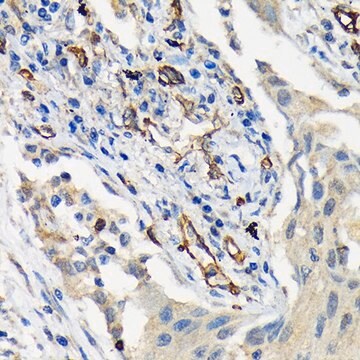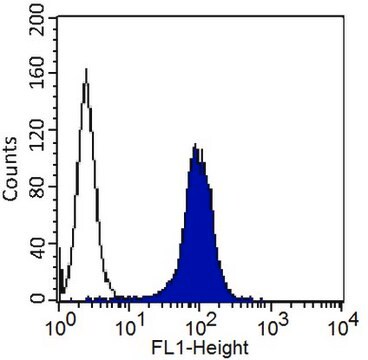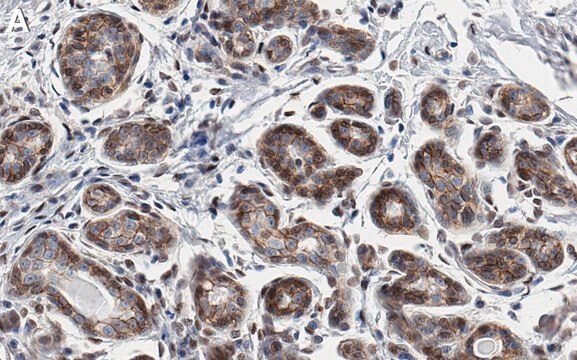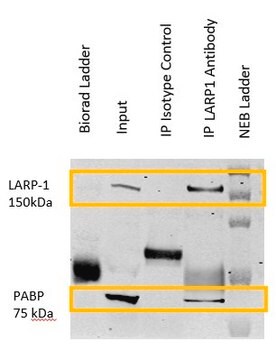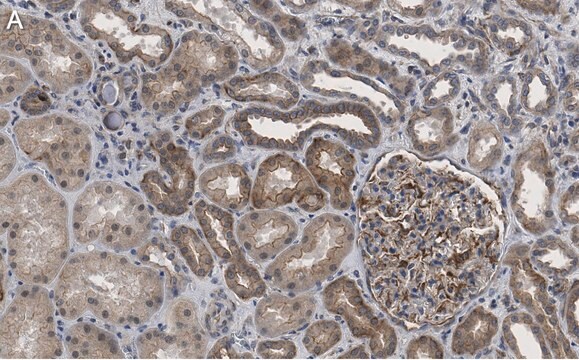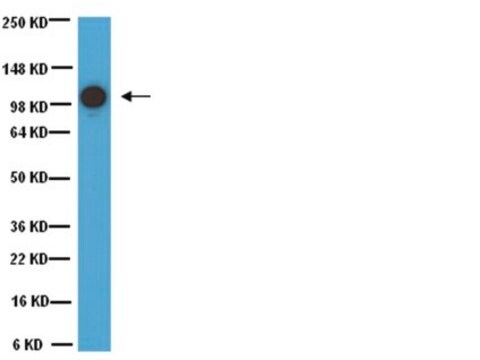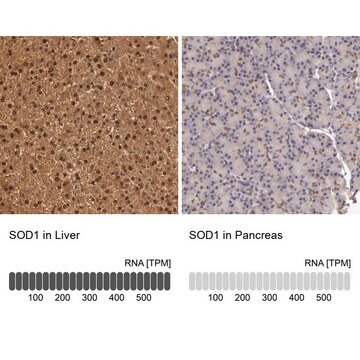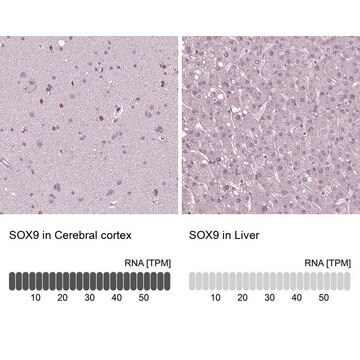詳細
We are committed to bringing you greener alternative products, which adhere to one or more of The 12 Principles of Green Chemistry.This antibody is Preservative-free, produced without the harm or sacrifice of animals and exceptionally stable to allow for ambient shipping and storage if needed and thus aligns with "Waste Prevention", "Designing Safer Chemicals" and "Design for Energy Efficiency".
Click here for more information.
ZooMAb® antibodies represent an entirely new generation of recombinant monoclonal antibodies.Each ZooMAb® antibody is manufactured using our proprietary recombinant expression system, purified to homogeneity, and precisely dispensed to produce robust and highly reproducible lot-to-lot consistency. Only top-performing clones are released for use by researchers. Each antibody is validated for high specificity and affinity across multiple applications, including its most commonly used application. ZooMAb® antibodies are reliably available and ready to ship when you need them.
特異性
Clone 1C21 is a ZooMAb® Rabbit recombinant monoclonal antibody that specifically detects Melanoma cell adhesion molecule (MCAM/CD146). It targets an epitope within 18 amino acids from the C-terminal, cytoplasmic domain.
免疫原
KLH-conjugated linear peptide corresponding to 18 amino acids from the C-terminal, cytoplasmic domain of human Melanoma cell adhesion molecule (MCAM/CD146).
アプリケーション
Quality Control Testing
Evaluated by Western Blotting in HeLa cell lysate.
Western Blotting Analysis: A 1:1,000 dilution of this antibody detected MCAM/CD146 in HeLa cell lysate.
Tested Applications
Western Blotting Analysis: A 1:1,000 dilution from a representative lot detected MCAM/CD146 in lysates from Human skin tissue and PC12, and SK-MEL-28 cells.
Immunohistochemistry (Paraffin) Analysis: A 1:100 dilution from a representative lot detected MCAM/CD146 in Human cerebral cortex tissue sections.
Immunocytochemistry Analysis: A 1:100 dilution from a representative lot detected MCAM/CD146 in HeLa cells.
Flow Cytometry Analysis: 0.1 μg from a representative lot detected MCAM/CD146 in HeLa cells.
Affinity Binding Assay: A representative lot of this antibody bound MCAM/CD146 with a KD of 1.2 x 10-6 in an affinity binding assay.
Note: Actual optimal working dilutions must be determined by end user as specimens, and experimental conditions may vary with the end user
ターゲットの説明
Cell surface glycoprotein MUC18 (UniProt: P43121; also known as Cell surface glycoprotein P1H12, Melanoma cell adhesion molecule, Melanoma-associated antigen A32, Melanoma-associated antigen MUC18, S-endo 1 endothelial-associated antigen, CD146) is encoded by the MCAM (also known as MUC18) gene (Gene ID: 4162) in human. MCAM/CD146 is a single-pass type I membrane glycoprotein that is synthesized with a signal peptide (aa 1-23), which is subsequently cleaved off to produce the mature form that contains an extracellular domain (aa 24-559), a transmembrane domain (aa 560-583), and a cytoplasmic domain (aa 584-646). It contains two Ig-like V-type domains in its N-terminal half and three Ig-like C2-type domains. It is detected in endothelial cells in vascular tissue throughout the body and plays a key role in endothelial signaling by interacting with a variety of ligands. It is involved in angiogenesis, vessel permeability, and leukocyte transmigration. During embryonic migration it is also observed at the surface of neural crest cells. It plays a role in cell adhesion and in cohesion of the endothelial monolayer at intercellular junctions in vascular tissue. It acts as a surface receptor that triggers tyrosine phosphorylation of Fyn and FAK1 and causes a transient increase in intracellular calcium levels. MCAM/CD146 is associated with tumor progression and the development of metastasis in human malignant melanoma. It is strongly expressed on metastatic lesions and advanced primary tumors. Three forms of CD146 have been described: 2 membrane isoforms, CD146 long (lgCD146) and CD146 short (shCD146), which differ in the cytoplasmic portion, and a soluble form (sCD146). This ZooMAb® recombinant monoclonal antibody, generated by our propriety technology, offers significantly enhanced specificity, affinity, reproducibility, and stability over conventional monoclonals. (Ref.: Leroyer AS., et al. (2019). Arterioscler. Thromb. Vasc. Biol. 39(6);1026-1033; Lehmann, JM., et al. (1989). Proc. Natl. Acad. Sci. USA. 86(24); 9891-9895).
物理的形状
Purified recombinant rabbit monoclonal antibody IgG, lyophilized in PBS, 5% Trehalose, normal appearance a coarse or translucent resin. The PBS/trehalose components in the ZooMAb formulation can have the appearance of a semi-solid (bead like gel) after lyophilization. This is a normal phenomenon. Please follow the recommended reconstitution procedure in the data sheet to dissolve the semi-solid, bead-like, gel-appearing material. The resulting antibody solution is completely stable and functional as proven by full functional testing. Contains no biocide or preservatives, such as azide, or any animal by-products. Larger pack sizes provided as multiples of 25 μL.
再構成
30 μg/mL after reconstitution at 25 μL per vial. Please refer to guidance on suggested starting dilutions and/or titers per application and sample type.
保管および安定性
Recommend storage of lyophilized product at 2-8°C; Before reconstitution, micro-centrifuge vials briefly to spin down material to bottom of the vial; Reconstitute each vial by adding 25 μL of filtered lab grade water or PBS; Reconstituted antibodies can be stored at 2-8°C, or -20°C for long term storage. Avoid repeated freeze-thaws.
法的情報
ZooMAb is a registered trademark of Merck KGaA, Darmstadt, Germany
免責事項
Unless otherwise stated in our catalog or other company documentation accompanying the product(s), our products are intended for research use only and are not to be used for any other purpose, which includes but is not limited to, unauthorized commercial uses, in vitro diagnostic uses, ex vivo or in vivo therapeutic uses or any type of consumption or application to humans or animals.

